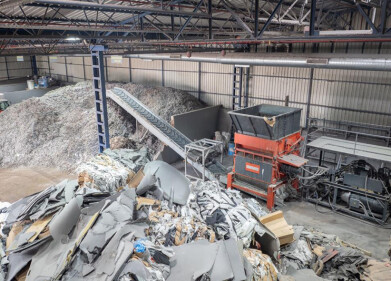Hazardous waste
How Bad Has Light Pollution Become?
Oct 28 2016
Those living in urban areas will be acutely aware of the extent of light pollution if they gaze up into the night sky – constellations have become all but indiscernible in well-lit cities and towns, while even rural dwellers may have noticed a deterioration in stargazing conditions over the years.
Up until now no hard data quantifying just how much light pollution has taken place had been collated. However, a new study from the University of Santiago in Spain has put together an investigation into the phenomenon, claiming that in some parts of the world the sky is 23 times lighter than it would without be the presence of manmade sources of light.
Degrees of deterioration
Though light has often been hailed as a symbol of progress and innovation, too much of it can have an adverse effect on our surroundings. Thanks to a paper authored by scientist Salvador Bara and published in the Royal Society Open Science, we can now determine exactly how much things have changed.
On a clear night with no moon in the sky, conditions are now anywhere between 14 and 23 times lighter than they would have been on a naturally dark night. Meanwhile, suburban areas also suffer from light intensification of as much as seven or eight times its natural state.
This brightening of the sky isn’t exclusive to urban areas, however. Even transitional areas (somewhere between townships and countryside) have seen skies that are between 1.6 and 2.5 times brighter than nature intended. Meanwhile, even the remotest of areas are still affected by a factor of up to 1.6, claims the study.
Natural darkness at risk of extinction
The study was conducted in the northern Spanish region of Galicia and assimilated readings from 14 independent monitoring stations. However, its authors believes that its findings can be extrapolated to apply to much of Europe and indeed much of the entire world.
“The natural darkness is nowadays at risk in large regions of the world, due to the spread of poorly designed outdoor lighting systems,” explained Bara. “Photons spilled from overpowered and inadequately shielded streetlights travel long distances across the atmosphere impinging on places that were not intended to be lighted. The result is a perceptible increase of the amount of optical radiation present at night-time in areas that would otherwise be dark.”
Recently, a campaign was launched to highlight the seriousness of light pollution by showcasing the natural beauty of the night sky in more remote regions of the world. While the KickStarter campaign did glean some attention and a modest amount of funding, this latest study represents the first time that hard facts have been added to the case for curbing light pollution.
Effects of light pollution
While the full effects of light pollution are yet to be determined, scientists and doctors predict that it can have a whole host of impacts on human health, causing headaches, migraines, increased anxiety levels and inhibited sexual performance, among others.
Meanwhile, it’s also expect to adversely affect nature in a number of ways. Earlier this year, a study found that UK light pollution had caused spring to come a full week earlier than normal, thus having a knock-on effect on the life cycles and habits of countless animals and plants.
What’s more, it’s also thought to reduce flowering among certain plants such as peas and beans, which could have a significant impact on the food chain and conceivably even ultimately effect humans.
Events
Aug 24 2025 Stockholm, Sweden and online
Aug 27 2025 Busan, South Korea
Sep 02 2025 Mexico City, Mexico
Sep 02 2025 Mexico City, Mexico
Sep 09 2025 Moscow, Russia









.jpg)




